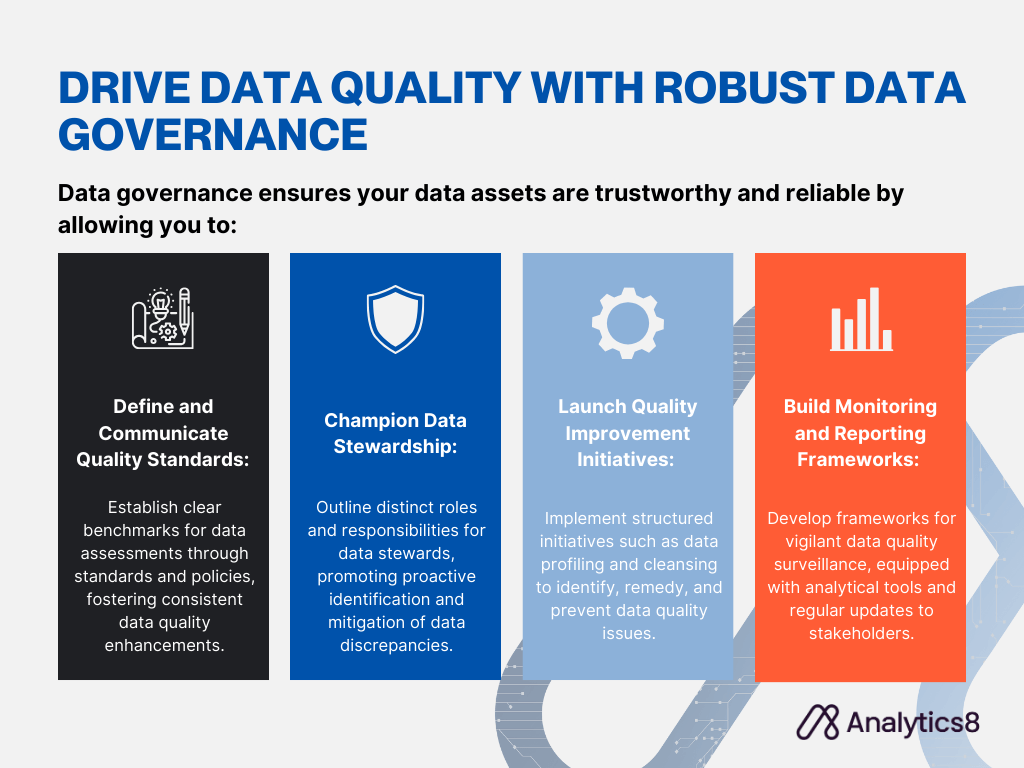Data Governance: Ensuring Data Quality and Compliance
Data governance is a crucial aspect of modern data management, encompassing various practices and processes that ensure data is accurate, secure, and compliant with regulations. As a senior cloud data and digital analytics engineer, implementing robust data governance strategies is essential for maximizing the value of data assets.

Data Sources
Effective data governance begins with identifying and managing data sources. This involves:
Cataloging data origins:
Documenting all internal and external data sources
Assessing source reliability:
Evaluating the credibility and consistency of each source
Standardizing data ingestion:
Implementing uniform processes for data acquisition
Data Freshness
Maintaining up-to-date information is critical for accurate analysis and decision-making. Key considerations include:
Real-time updates:
Implementing systems for continuous data refreshes
Versioning:
Tracking data changes over time
Archiving strategies:
Defining protocols for storing historical data
Data Quality
Ensuring high data quality is fundamental to reliable analytics. This involves:
Data profiling:
Analyzing data to identify inconsistencies and anomalies
Cleansing processes:
Developing automated routines to correct errors and standardize formats
Quality metrics:
Establishing KPIs to measure and monitor data quality
GDPR Compliance
Adhering to the General Data Protection Regulation (GDPR) is essential for organizations handling EU citizens' data. Key aspects include:
Data minimization:
Collecting only necessary personal data
Consent management:
Implementing systems to obtain and track user consent
Data subject rights:
Facilitating data access, rectification, and erasure requests
Data Mapping
Creating a comprehensive data map is crucial for understanding data flow within an organization:
Data inventory:
Cataloging all data assets and their locations
Process mapping:
Documenting how data moves through various systems
Metadata management:
Maintaining detailed information about data attributes and relationships
Data Rules
Establishing clear data rules ensures consistency and compliance:
Data standards:
Defining formats, naming conventions, and data entry protocols
Access controls:
Implementing role-based permissions for data usage
Retention policies:
Specifying how long different types of data should be kept
Data Catalog
A well-maintained data catalog enhances data discovery and understanding:
Metadata repository:
Creating a centralized location for data definitions and descriptions
Search functionality:
Enabling users to easily find relevant data assets
Data stewardship:
Assigning ownership and responsibilities for data management
Data Lineage
Tracking data lineage is crucial for understanding data provenance and impact:
End-to-end visibility:
Mapping data flow from source to consumption
Impact analysis:
Assessing how changes in one dataset affect others
Audit trails:
Maintaining records of data transformations and usage
